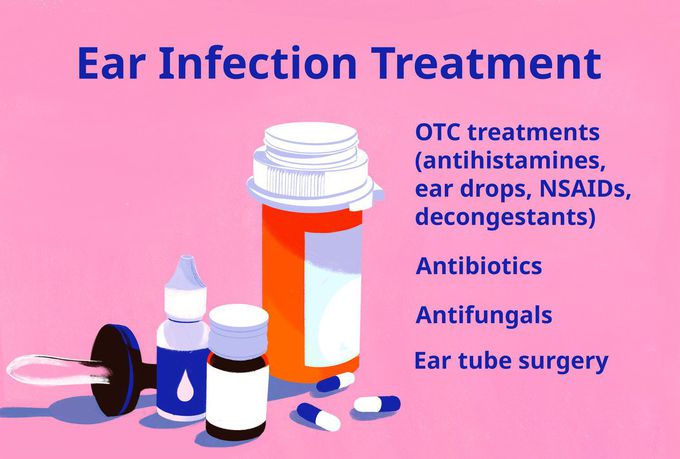


How is an ear infection treated?
Treatment depends on many factors, including: Your child’s age. The severity of the infection. The nature of the infection (first-time, ongoing or repeat infection). Whether fluid remains in the middle ear for a long time. Often, ear infections heal without treatment. Your provider may monitor your child’s condition to see if it improves before prescribing treatments. Your child may need antibiotics or surgery for infections that don’t go away. In the meantime, pain medicines can help with symptoms like ear pain. Antibiotics Your child may need antibiotics if bacteria are causing the ear infection. Healthcare providers may wait up to three days before prescribing antibiotics to see if a mild infection clears on its own. If an infection is severe, your child may need to start antibiotics immediately. The American Academy of Pediatrics provides guidelines on when a child should receive antibiotics and when it’s better to observe. Factors include your child’s age, the severity of their infection and their temperature. The table below summarizes the recommendations. American Academy of Pediatrics Treatment Guide for Acute Otitis Media (AOM) Child’s Age Severity of AOM / Temperature Treatment 6 months and older; in one or both ears. Moderate to severe for at least 48 hours or temp of 102.2 degrees F (39 degrees C) or higher. Treat with antibiotics. 6 months through 23 months; in both ears. Mild for less than 48 hours and temp less than 102.2 degrees F (39 degrees C). Treat with antibiotics. 6 months to 23 months; in one ear. Mild for less than 48 hours and temp less than 102.2 degrees F (39 degrees C). Treat with antibiotics OR observe. If observe, start antibiotics if the child’s condition worsens or doesn’t improve within 48 to 72 hours of start of symptoms. 24 months or older; in one or both ears. Mild for less than 48 hours and temp less than 102.2 degrees F (39 degrees C). Treat with antibiotics OR observe. If observe, start antibiotics if the child’s condition worsens or doesn’t improve within 48 to 72 hours of start of symptoms. Even if symptoms improve, don’t stop taking the medicine until your provider tells you to stop. The infection can return if your child doesn’t take all antibiotics as prescribed. Pain-relieving medications Your healthcare provider may recommend over-the-counter (OTC) medicines, such as acetaminophen (Tylenol®) or ibuprofen (Advil®, Motrin®), to relieve pain and reduce fever. They may prescribe pain-relieving ear drops. Follow your provider’s instructions about what medicines are safe for your child. Never give aspirin to children. Aspirin can cause a life-threatening condition called Reye’s syndrome. Ear tubes (tympanostomy tubes) Your child may need ear tubes if they experience frequent ear infections, infections that don’t improve with antibiotics or hearing loss related to fluid buildup. An ear, nose and throat (ENT) specialist places the tubes during a tympanostomy. It’s a short (approximately 10-minute) procedure. Your child can go home that same day. During a tympanostomy, a provider inserts a small metal or plastic tube into a tiny incision (cut) in your child’s eardrum. The procedure to perforate (pierce a hole into) and drain the eardrum is called a myringotomy. Once the tubes are in place, they let air into the middle ear and allow fluid to drain. The tube usually stays in place for 12 to 18 months. It may fall out on its own, or your child may need surgery to remove it. Once the tubes are gone, the hole in your child’s eardrum will heal and close.
Best Probiotics For Womens 2025: Are They More Effective?

